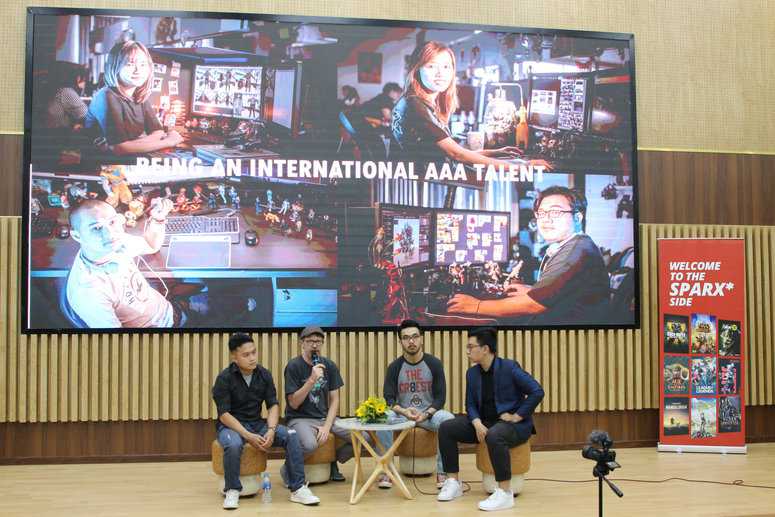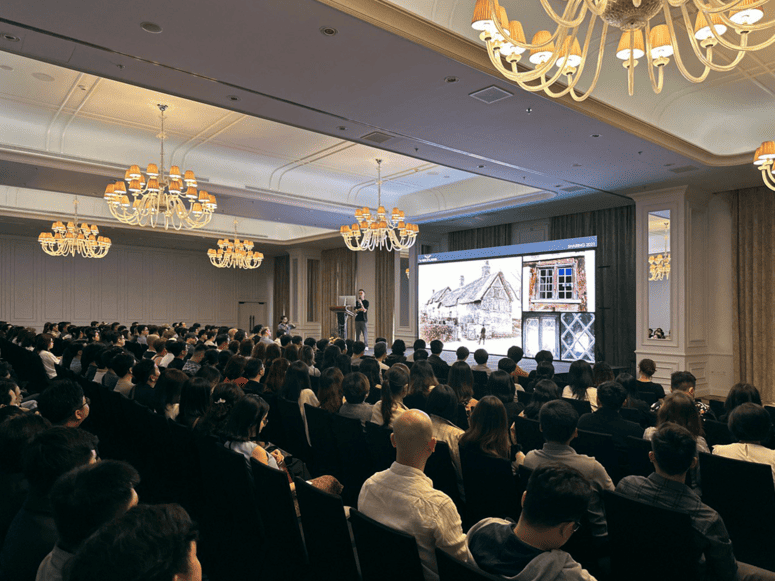Vietnam has firmly established itself as a prominent regional hub for game production in just a decade. The impressive growth of the domestic gaming industry has recently made professions related to game production, such as 3D game art (which involves characters, vehicles, weapons, and in-game environments), more popular than ever before.
Kristian Pedlow, Senior Art Director at Sparx* – a Virtuos Studio, has trained and managed hundreds of Vietnamese artists who collectively contributed to many blockbuster entertainment projects. In this interview, he shared about remarkable transformations of the domestic game art industry over the past decade.
As someone who has trained and managed hundreds of Vietnamese artists who contributed to many blockbuster entertainment projects, Kristian Pedlow, Senior Art Director at Sparx* – a Virtuos Studio, shared about remarkable transformations of the domestic game art industry over the past decade.
You have lived and worked in Vietnam for more than 10 years. What are some observations you’ve made about the game art industry?
When I first moved to Ho Chi Minh City, the perception of jobs related to 3D art was somewhat limited. 3D art companies at the time mostly focused on advertising, and very few did graphics for games or movies. Game production was a very new concept and an emerging field with uncertain prospects, hence many were initially hesitant to pursue a career in 3D art in game production.
Now, Vietnamese artists have added their names to many of the most anticipated entertainment projects globally. recent titles that stand out are the amazing Horizon Forbidden West or Final Fantasy XVI Dominance – these are games with global influence that are highly appreciated for their content and image quality. Sparx is proud to have been involved in both projects.
10 years ago, Sparx* only had around 100 employees. Today, we can proudly share that we’ve surpassed 600 employees at our studio. It’ s truly been an exciting time for me personally to be a part of and contribute to the thriving ecosystem in Vietnam.
Does the transformation come mainly from the changes in the quality of talent?
Vietnam today has a wealth of talented 3D artists with great work ethics and eagerness to learn. This is the result of many long-term investments in career guidance and training over the years, as well as coordination between the private sector and training units to create a supply of talent to narrow the gap between Vietnamese and international teams. Our youths who love games and are interested in game art now have more opportunities to access formal training programs than previous generations.
Earning the right to work on international films and game projects also requires game artists in Vietnam to proactively improve their skills and creative thinking. In addition, the establishment of production studios by many of the world’s major game companies in Vietnam also promotes the transfer of knowledge and technology in the country. The feedback we receive from our partners is encouraging, and proves that the quality of work of the game art team in Vietnam fully meets the highest standards of the global game industry.
However, despite receiving more attention than before, there is still a certain gap between the quality of talent supply and demanding environment in studios in production, making it difficult for the domestic game art industry to grow to their fullest potential.

Kristian shares his experience in becoming an AAA game expert with students in a university workshop.
Earning the right to work on international films and game projects also requires game artists in Vietnam to proactively improve their skills and creative thinking. In addition, the establishment of production studios by many of the world’s major game companies in Vietnam also promotes the transfer of knowledge and technology in the country. The feedback we receive from our partners is encouraging, and proves that the quality of work of the game art team in Vietnam fully meets the highest standards of the global game industry.
However, despite receiving more attention than before, there is still a certain gap between the quality of talent supply and demanding environment in studios in production, making it difficult for the domestic game art industry to grow to their fullest potential.
What do you think are the solutions to close this gap?
Improving the quality of training programs is the only way.
At Sparx*, we combine many different training models and programs to ensure that each member is fully equipped with knowledge and skills for their work – from initial courses to help fresh graduates receive direct training from experienced artists and art directors, to regular classes the team to stay updated with the latest technology and techniques.

Kristian and his colleagues with graduates of PROCLASS* – an exclusive AAA game pipeline training program between Sparx* and training partners in Ho Chi Minh City
We also coordinate with our partners, including some of the world’s largest game development companies in leading markets, to organize overseas training programs for project teams. In addition, we regularly organize many events and knowledge exchange programs with other Virtuos studios globally to bring more inspiration for learning and development for our in-house talent. In 2023 alone, more than 200 Sparx* members participated in internal and external cross-training sessions.

A cross-studio training with Cheekin Chan, Vice Managing Director of Art Division at Virtuos
In your opinion, what do you think the game art industry in Vietnam will look like in the next 10 years?
It only took over a decade for Vietnam to firmly assert its position as a regional hub for game production. We have no reason to be skeptical about the industry’s continued strong growth in the near future. “Extremely promising” is what I can say at this time.

